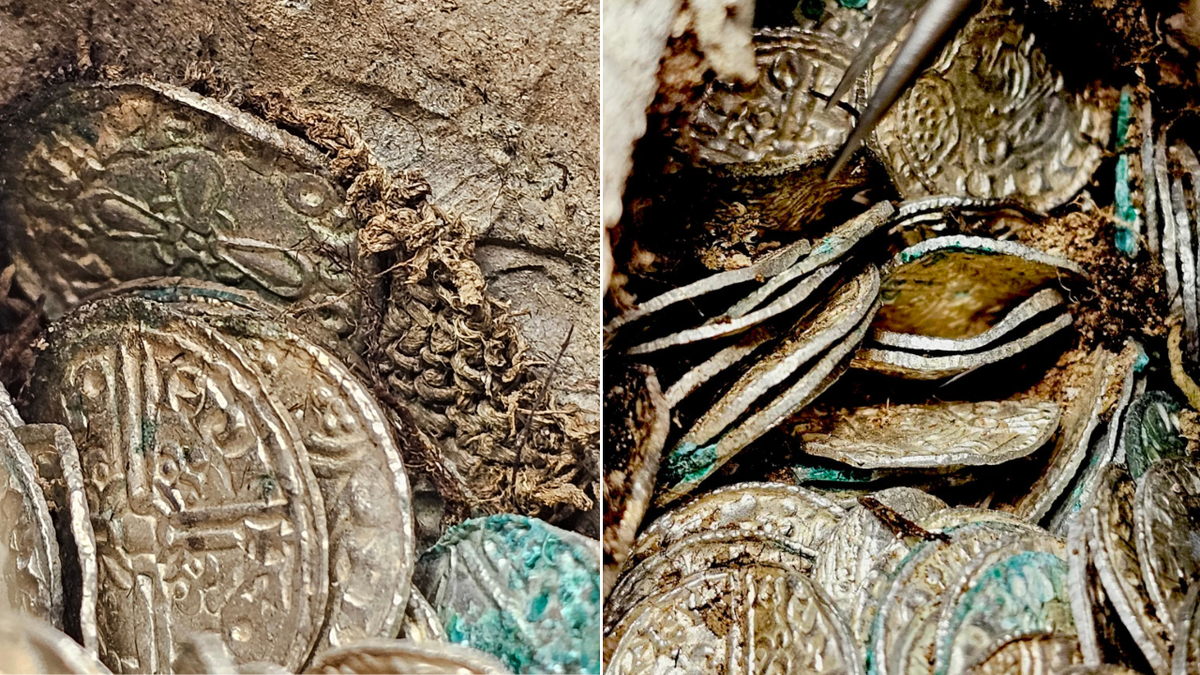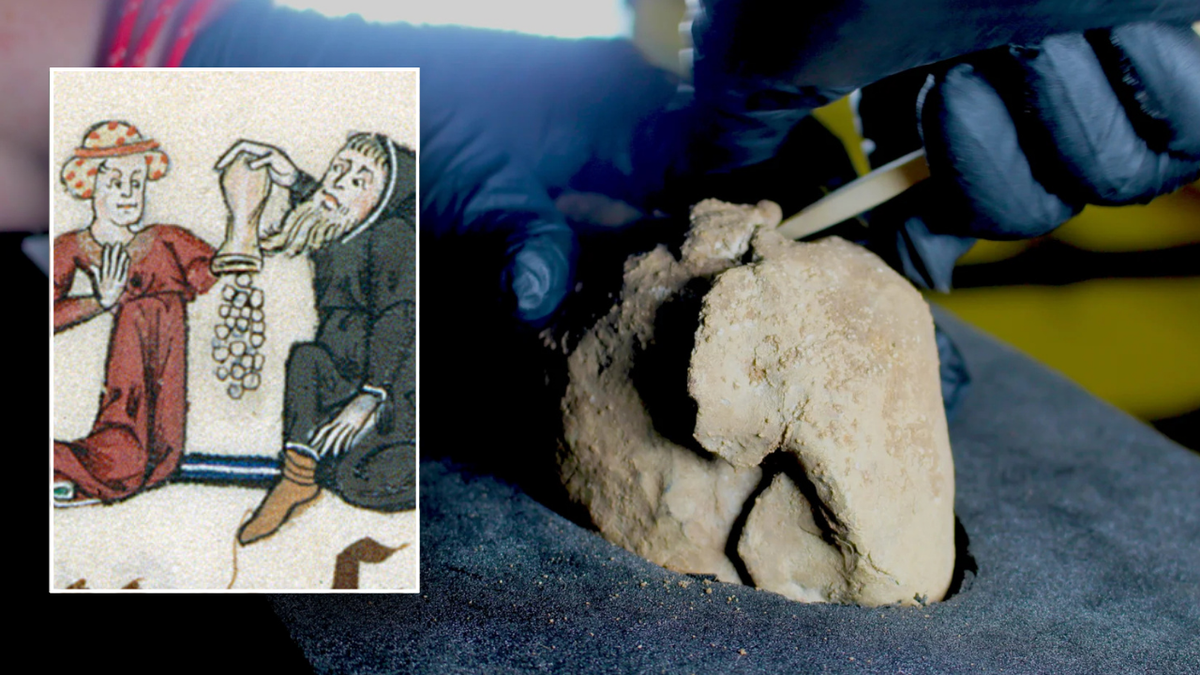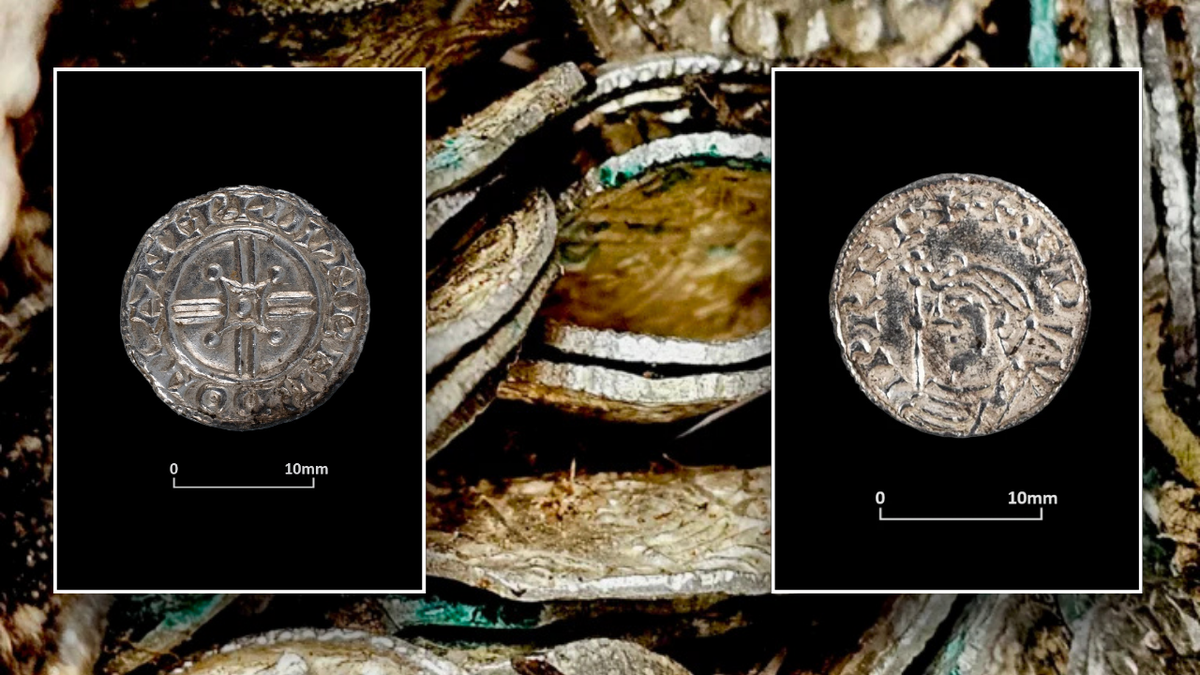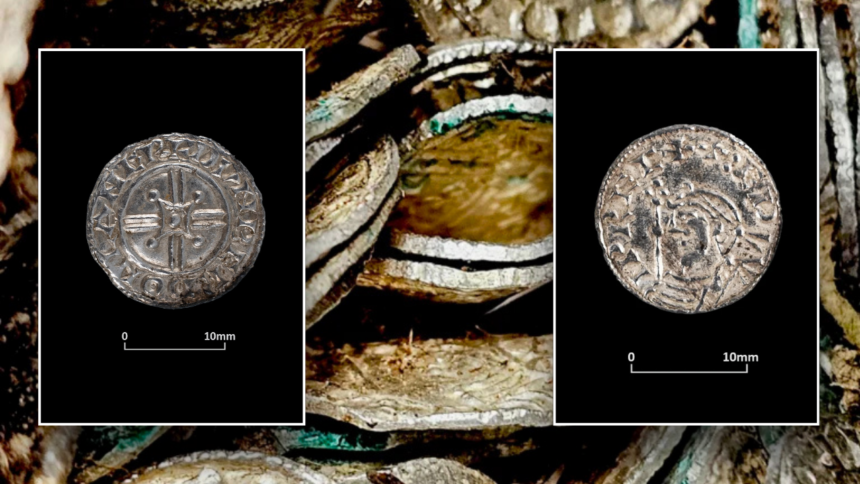Archaeologists in the UK lately unearthed 1,000-year-old treasure in an uncommon location: a building website for a nuclear energy plant.
Oxford Cotswold Archaeology (OCA) introduced the invention, which consists of 321 silver cash, in a press launch on Jan. 7. The cash had been discovered on the Sizewell C nuclear energy station website in Suffolk, England.
The cash had been issued between 1036 and 1044, the group stated — predating the Magna Carta by practically 200 years, and the Battle of Hastings by a couple of many years. They had been present in “mint situation” in a lead and fabric package deal, in a bundle that researchers have in comparison with a Cornish pasty.
“The hoard was discovered on the junction of two early medieval discipline boundary ditches, a location which hints at deliberate concealment,” the group described. “The cash had been fastidiously positioned inside a textile object, presumably a handbag, after which wrapped tightly in lead sheeting.”
METAL DETECTORISTS STUMBLE ACROSS 1200-YEAR-OLD TREASURE, UNUSUAL CHRISTIAN ARTIFACT IN VIKING GRAVES

Oxford Cotswold Archaeology (OCA) introduced the invention, which consists of 321 silver cash, in a latest press launch. (Oxford Cotswold Archaeology)
“This implausible discover provides us nice perception into the English financial and political landscapes of the eleventh century.”
The cash inside the hoard had been issued in the course of the reigns of three Home of Wessex kings: Harold I (1036-40), Harthacnut (1040-2) and Edward the Confessor (1042-66). Many of the cash had been struck in London, whereas others had been made within the English cities of Thetford, Norwich, Ipswich, Lincoln and Stamford.
The cash had been made at a “turbulent” time period in English historical past: Harold and Harthacnut had been each the sons of Cnut, whose father Sweyn Forkbeard turned the primary Danish king to rule England. Edward the Confessor died in January 1066, months earlier than Normans took management of England following the Battle of Hastings.
ARCHAEOLOGISTS STUMPED BY STRANGE ALIEN-LIKE FIGURINE DATING BACK 7,000 YEARS: ‘RAISES QUESTIONS’

Archaeologists say that the bundle of cash would have been sufficient to purchase a number of cows within the 1000s. (Oxford Cotswold Archaeology)
Archaeologists consider that the proprietor of the cash might have been robbed throughout a regime change, presumably when Edward was coronated in 1043.
“Particularly, a few of the wealthier people related to the earlier regime had been exiled or had property confiscated within the aftermath of Edward’s coronation,” the OCA defined. “The proprietor of the coin hoard might need feared the repercussions of the regime change and determined to bury their wealth as safeguard, aiming to retrieve it at a later date.”
“We’d by no means know with certainty why this little treasure was by no means retrieved,” the group added. “The proprietor might have been prevented from returning to the situation for varied causes, died earlier than they may retrieve their financial savings, or, alternatively, they had been unable to relocate the precise spot they had been buried at. “
CLICK HERE TO SIGN UP FOR OUR LIFESTYLE NEWSLETTER

The cash had been minted within the early eleventh century in a number of cities, archaeologists consider. (Oxford Cotswold Archaeology)
In whole, the 321 recovered cash would have been price 320 pence, as they included two halfpence cash. The archaeological group stated that it’s tough to evaluate what buying energy it could have immediately, however that it was similar to a “financial savings pot.”
“Though it’s arduous to equate this sum of cash with modern-day buying energy, proof from legislation codes of the tenth and eleventh centuries recommend that cattle had a price of roughly 20p every,” the OCA defined. “Utilizing this metric, we would estimate that it might have bought roughly 16 cows — a small herd!”
Although definitely a hoard of cash, archaeologists stated that the treasure could be extra equal to an prosperous individual’s financial savings fairly than the complete wealth of a king.
For extra Life-style articles, go to foxnews.com/life-style.
“This hoard is equally not of an unlimited dimension indicative of maximum wealth,” the assertion defined. “[The owner] was virtually definitely not of nationwide significance or super-elite standing. It’s extra prone to have been owned by an individual of native clout, maybe a rich farmer.”

The cash had been a rich individual’s “financial savings pot,” consultants say, fairly than belonging to a king. (Oxford Cotswold Archaeology)
In an announcement, OCA coin specialist Alexander Bliss stated that analyzing the hoard concerned “enter from a number of specialists and challenge companions within the fields of numismatics, finds and conservation.”
CLICK HERE TO GET THE FOX NEWS APP
“This new coin hoard supplies us with priceless perception into the wealthy historic backdrop of this era, including to the proof that Edward the Confessor’s accession to the English throne was marked by a level of uncertainty and concern inside wider society,” Bliss stated. “To play a small half in bringing its story to life has been an honour and a privilege.”








